![]()
FIELD DAY ANALYSIS: SOUTH MOUNTAIN VILLAGE CITY PLANNING, Part I
(I recommend this piece be read before venturing to my Habitat site. It opens the doors for greater appreciation for this organization).
Cassandra Thielen
Event Day Analysis for February 14, 2003
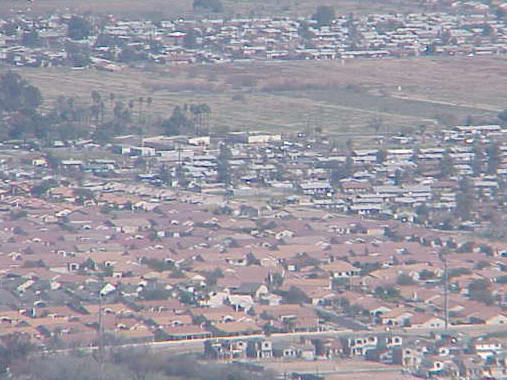
Absolute amazement is what my feelings were in regards to Friday’s events. The pieces to the puzzle are now starting to come together. Initially we met with Alan Stephenson, the appointed South Mountain Village City Planner. He presented an abundance of information on zoning regulations and future plans for what was known for decades as “South Phoenix.” We learned that Mayor Terry Goddard started the “village” idea for the entire City of Phoenix in the 1980’s. Now this idea encompasses all of the Phoenix Urban Village and is broken down into 13 villages. I myself reside within the North Mountain village.
Mr. Stephenson spoke
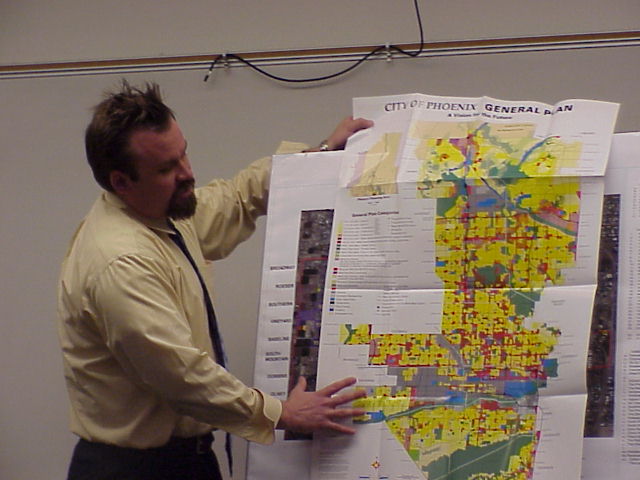 of many plans
and ideas for this “developable” area.
However, he failed to address one important issue, the issue of
affordable housing in regards to home ownership.
It was not until we spoke with Manny Gonzalez on February 21, the City of
Phoenix Housing Department Director, that our concerns about this topic were
addressed. Apparently, the City of
Phoenix is one of the only cities in this country to have a housing department
within the state government. This
department has an annual budget of ~70 million dollars of which half is used in
conjunction with other developers for the purposes of establishing more
“affordable” publicly funded homes.
of many plans
and ideas for this “developable” area.
However, he failed to address one important issue, the issue of
affordable housing in regards to home ownership.
It was not until we spoke with Manny Gonzalez on February 21, the City of
Phoenix Housing Department Director, that our concerns about this topic were
addressed. Apparently, the City of
Phoenix is one of the only cities in this country to have a housing department
within the state government. This
department has an annual budget of ~70 million dollars of which half is used in
conjunction with other developers for the purposes of establishing more
“affordable” publicly funded homes.
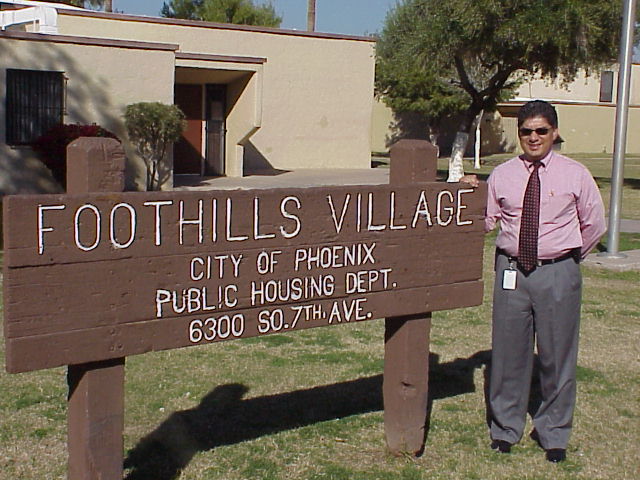 Within this program, there are 4 types of
housing programs catered to all different populations.
Scattered sites homeownership, section 8 housing, conventional public
housing, and senior housing are all offered at a fixed rate totaling no more
than 30% of the adjusted family income.
The city program pays the difference to the landlord. Also,
those employed making above the minimum required for subsidized housing can
apply for “affordable” housing with private landlords.
These landlords work directly with the City of Phoenix Housing Department
and are required to offer these tenants a fixed rate of a few hundred dollars
below the market value at the current time.
This program applies to legal and illegal residents (with stipulations),
single and multi person families, employed and unemployed individuals, along
with all races and ethnicities. Despite
the advantages, there are numerous limitations.
For example, despite the fact that there are over 22,000 applicants still
waiting for public housing, the mere fact of being a previous homeowner is a
disqualifier in receiving public housing benefits.
This is where a major concern for “affordable” housing comes in.
Within this program, there are 4 types of
housing programs catered to all different populations.
Scattered sites homeownership, section 8 housing, conventional public
housing, and senior housing are all offered at a fixed rate totaling no more
than 30% of the adjusted family income.
The city program pays the difference to the landlord. Also,
those employed making above the minimum required for subsidized housing can
apply for “affordable” housing with private landlords.
These landlords work directly with the City of Phoenix Housing Department
and are required to offer these tenants a fixed rate of a few hundred dollars
below the market value at the current time.
This program applies to legal and illegal residents (with stipulations),
single and multi person families, employed and unemployed individuals, along
with all races and ethnicities. Despite
the advantages, there are numerous limitations.
For example, despite the fact that there are over 22,000 applicants still
waiting for public housing, the mere fact of being a previous homeowner is a
disqualifier in receiving public housing benefits.
This is where a major concern for “affordable” housing comes in.
A large portion of the area in South Mountain Village has been reserved for residential property. The zoning regulations serve as a regulator to everyone and anyone who wants to conduct enterprise, whether commercial or residential, within these regions. One would assume that this would protect the older residents from experiencing any negative effects due to the new development. However, the program created to regulate the area, also endangers its inhabitants. The main issue is affordable housing in regards to owning your own home. What exactly is this concept of being able to afford one's own home?
In regards to this deceivingly effortless concept of affordable homeownership, comes about major issues including the home cost, property value, and property taxes. Considering that property taxes are formulated from the value of property, it would be easy to see how new development in a once overlooked region would drastically alter a once stable and content community. South Phoenix was overlooked when new planning for North Phoenix went underway. Now that the city of Phoenix has literally run out of room to grow, this ignored area has now become more or less a last resort to produce monetary gains. Gentrification has started in South Phoenix. For example, the name itself has changed, from South Phoenix to South Mountain Village as a means of erasing the negative connotations linked to the past and enticing a new positive future. Writer and Geographer Neil Smith has been investigating and studying this process for many years. In his article, "The New Urban Frontier: Gentrification and the Revanchist City" he describes gentrification as a "dirty word" in that it has enormous devastating and destructive implications on those directly effected. The process starts with a de-investment in the area. This process literally means a lack of interest and concern for the area. This includes allowing the property to deteriorate by failing to repair problem areas. When the land is cheap enough, then an influx of private investments (real estate, new subdivisions, and businesses) occurs bringing in middle class homebuyers and renters. For those who prefer to candy coat this process, it is described as a "neighborhood recycling, upgrading, renaissance" of a once devitalized or culturally void community. Some may describe it as a "frontier" type project, assuming that the ones previously there were unworthy of being noticed. Historically, gentrification has rebuilt the "blighted" communities producing a increase in evictions or homelessness (Smith, 1996). Concrete evidence of gentrification is visible in many locations in this area. However, the city planner, Mr. Stephenson, assured us that they were not allowing developers to build new subdivisions next to the older indigenous neighborhoods. Our research group only had to travel 5 minutes in either direction to witness new subdivisions right next to older homes. To demonstrate this, our group took a picture of two homes, an older home and a newer home on the same street.
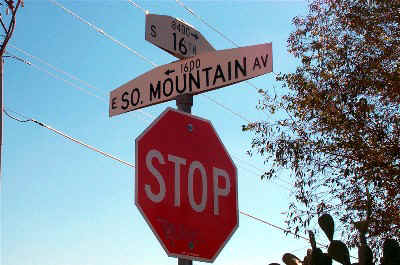
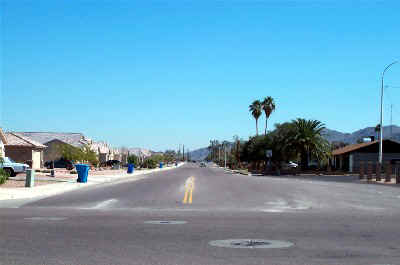
The first set of pictures were taken at the cross section of 16th Street and South Mountain avenue.
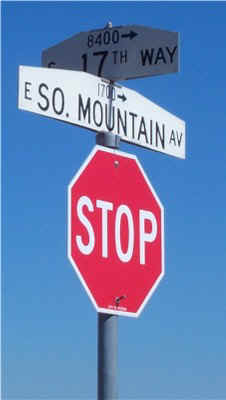
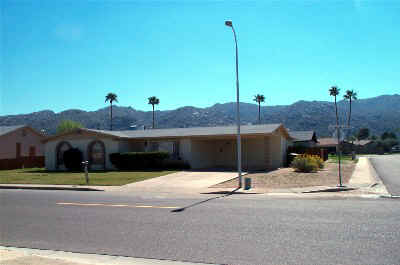
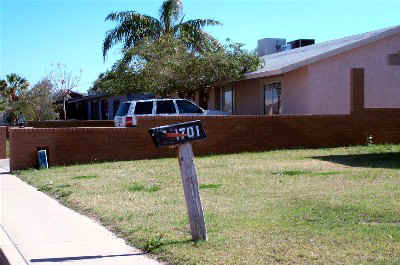
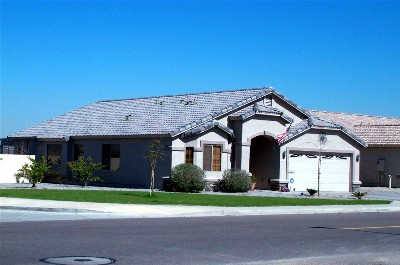
On the corner of 17th place and South Mountain avenue exist two homes. There are many differences between these two homes besides the obvious. For example, the older home has a mailbox in the front yard while the newer home does not. Also, the older home is made out of brick. Construction material is a noticeable marker that distinguishes many old homes from newer ones.
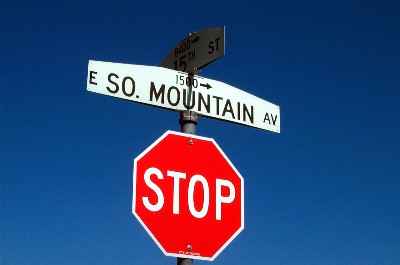
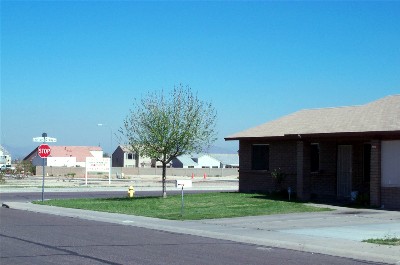
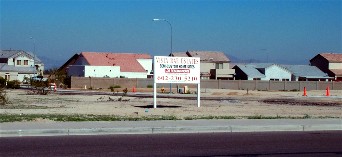
Another example showing new homes within close proximity of older homes is evident around 15th street and South Mountain avenue. It is apparent that there is new home building occurring near by if not right next to older homes. Our research group decided to pursue more evidence to support the idea that new home building has direct effects on the individuals already residing in the surrounding areas.
Go to Field Day analysis: south mountain village, Part II
Smith, Neil (1996). The New Urban Frontier: Gentrification and the Revanchist City. Printed in Great Britain: Routledge.





